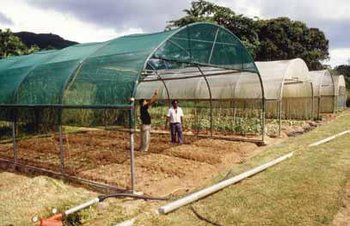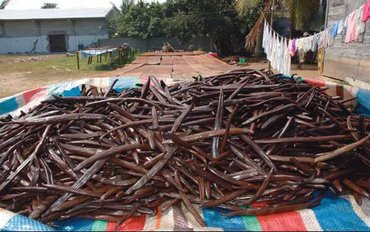Africa's renaissance for the environment: vulnerability of Small Island Developing States
Contents
Issues
The vulnerability of African Small Island Developing States (SIDS), along with other SIDS, was highlighted at the 2005 Mauritius international meeting to review the 1994 Barbados Programme of Action (BPoA) for the sustainable development of these countries. For most SIDS their small land size and limited natural resources create a serious challenge for meeting the needs of their growing populations, and the related demands for more food, jobs and other services. Extreme poverty in some SIDS remains a challenge. Achieving a balance between conserving their land and marine environments and promoting economic sectors such as tourism, agriculture and manufacturing is a challenge. In terms of environmental issues, SIDS are threatened by invasive alien species (IAS), pressures on endemic species, land degradation, climate change and increased frequency of natural disasters, freshwater availability, solid waste and wastewater management.
The African SIDS have made significant progress in drawing international attention to the many challenges they face, as well as establishing intergovernmental institutions to address these issues. These include the Indian Ocean Commission (IOC) and the Alliance of Small Island States (AOSIS), who, along with regional institutions such as the African Union (AU), Economic Commission for Africa (ECA) and the African Development Bank (AfDB), will continue to be key players in assisting governments to tackle problems which threaten their sustainable development.
Outlook
The challenges facing the African SIDS will continue to be a major policy issue in the decades ahead, requiring innovative and strategic interventions to respond to both traditional and emerging issues. The greatest challenge is presented by climate change whose impacts may threaten the very existence of some communities. Mass tourism and overexploitation of coastal and marine resources may exacerbate the degradation of these natural environments. Tourism also affects demands for freshwater and contributes pollution through increased waste generation and general land degradation.
Action

From the 1992 Earth Summit, to the 1994 BPoA, to Rio +5, to the 2002 World Summit on Sustainable Development (WSSD) and the 2005 Mauritius international meeting, many policies have been adopted. However, many of these still face implementation challenges. In support of these and regional and sub-regional responses, the following actions are critical to support sustainable development in the African SIDS:
- Develop strategies that balance economic development of sectors such as tourism with the cultural needs of the people including the promotion of indigenous knowledge related to nature management.
- Allocate adequate resources in annual national budgets to strengthen environmental monitoring and enforcement.
- Allocate adequate resources to universities and research organizations to conduct integrated research which brings together data and knowledge from scientific, social, economic and environmental disciplines to facilitate planning and management.
- Install both low- and high-tech early warning systems which are appropriate at different levels, from household and community to national and subregional.
- Develop professional exchange programmes among themselves and other SIDS regions to build capacity in environmental management.
Stakeholders
The stakeholders include governments, sub-regional and regional socioeconomic groupings, the private sector and big business, civil society and the public.
Result and target date
Strategies for sustainable development in the context of the New Partnership for Africa's Development (NEPAD) environment action plan should be finalized, and implementation should start, in five years. However, the targets of the Millennium Development Goals (MDGs) are also critical in the SIDS and remain the overall target.
Further reading
- FAO, 2004. . FAO Commodities and Trade Technical paper. Food and Agriculture Organization of the United Nations, Rome.
- UNEP, 2006. Africa Environment Outlook 2. Nairobi, Kenya.
|
|
| Disclaimer: This article is taken wholly from, or contains information that was originally published by, the United Nations Environment Programme. Topic editors and authors for the Encyclopedia of Earth may have edited its content or added new information. The use of information from the United Nations Environment Programme should not be construed as support for or endorsement by that organization for any new information added by EoE personnel, or for any editing of the original content. |
